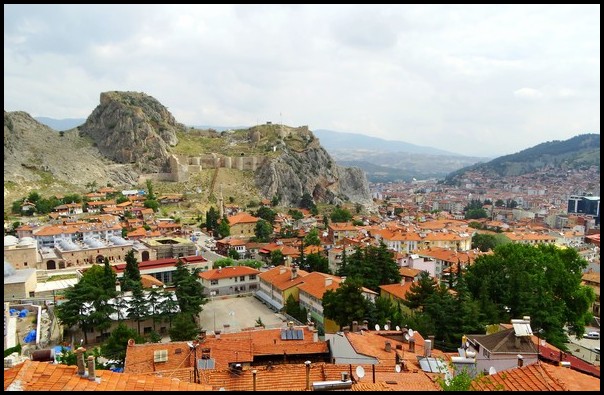
Introduction to Tokat – Turkey
Tokat is a lesser-known city located in north central Turkey. It’s situated in the mountains about two hours’s drive inland from Turkey’s northern Black Sea coast. Tokat is the capital of Tokat Province, which is primarily mountainous and rural.
While Tokat is little-known nowadays, even by many Turks, it was a very important city historically, particularly during the Seljuk Turkish Empire of the 1100s-1200s.
Nowadays Tokat is well worth a few-days’ visit for its dramatic natural setting, beautiful Ottoman-era old town district, dozens of historic mosques, various specialty museums and a handful of other significant historic buildings.
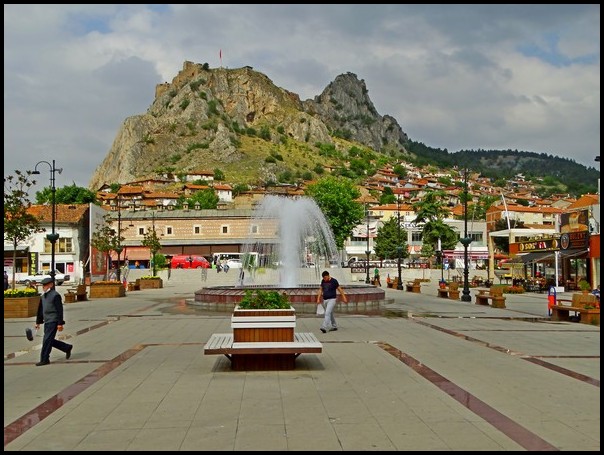
Geography and lay-out of Tokat
Tokat is situated along the confluence of two rivers, surrounded by mountains. The most dramatic natural feature is a jagged rocky ridge and pinnacle that soars above the historic section of the city.
The crag’s sloping lower flanks are stacked with rows of Ottoman-era houses, with their white-washed walls, dark wood trimmings and terracotta clay roofs. They wrap steeply around the end of the rocky bluff. On the very top of the peak are the ruins of a Seljuk-era castle, which now provides spectacular panoramic views over the city.
Tokat’s original town area, with all its beautiful historic buildings from the Seljuk & Ottoman periods, is set at the base of the mountain ridge and running southward along the smaller of two rivers. The town runs through a rather tight valley flanked by low rounded mountains covered in pine forests.
That river is now barely a trickle running northward. It’s cemented in with high sloping walls and lined on both sides by one of Tokat’s main roads, rendering it of no interest or beauty.
This minor canal spills into Tokat’s more significant & attractive river to the north, the Yesilirmak, which runs east-west in a broader valley north of the original town area. The broad but very shallow & placid Yesilirmak River is lined by a more attractive sloping stone wall. A historic, multi-arched stone bridge crosses it.
Tokat city has beautified the river area by lining both sides with landscaped parks and gardens with broad walking paths and impressive wrought-iron fencing & lamp-posts. Outdoor cafes, playgrounds, exercise stations and benches are scattered through the parks, often under large shady trees. Tokat residents make good use of this attractive outdoor city space.
Tokat’s modern city sprawl spreads out in all directions north of the river, filled with the usual large boxy condo & apartment buildings that seem to dominate most Turkish towns and cities nowadays. That vast modern city stretch holds little attraction or interest for visitors. However, as noted above, Tokat’s historic districts have many significant points of interest.
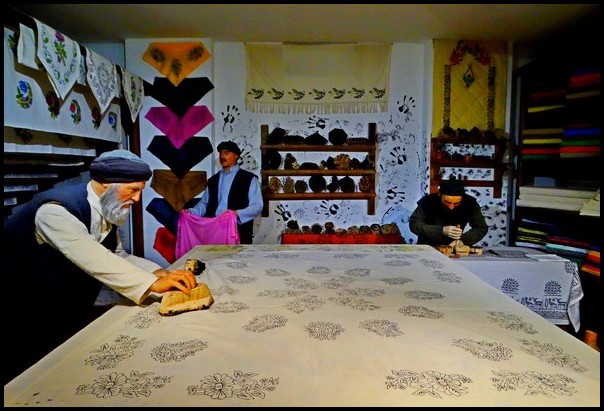
Brief History of Tokat
The Tokat region has been inhabited since at least 4000 BC, as discovered at various archaeological sites throughout the province. That ancient date was the Copper Age, aka Chocolithic Age.
Evidence of human habitation from that time forward has been found in the area. That includes Bronze Age, Assyrians, Phrygians, Persians, Greeks, Romans, Byzantines, Seljuk Turks and Ottoman Turks. The excellent Tokat Museum displays findings from all these eras, along with detailed explanations in Turkish and English.
Various civilizations in Tokat developed pottery, copperwares, coins, weaving, fabric printing, basketry and a rich cuisine culture. As a result, Tokat was part of the old Silk Road trading routes.
The city held varying levels of importance over the centuries, but became a very important part of the Seljuk Empire, when Tokat was considered the sixth most important Seljuk city.
It became particularly famed for its copperwares and printed fabrics. The Seljuk Sultans declared that Tokat was the only place that could make those printed fabrics, giving the city a distinctive trade. Today those original print patterns are still made and sold in the markets and tourist shops.
Tokat’s importance waned under the Ottoman Empire, when the Ottomans made nearby Sivas the main city in the region.
Today Tokat is so insignificant that many Turks don’t even know it. I discovered Tokat by searching online for places to visit north of Cappadocia, en route to the Black Sea. Photos of Tokat’s striking jagged mountains, stunning historic architecture and surprisingly large number of museums caught my eye.
But whenever I mentioned Tokat to my Turkish friends & acquaintances, nobody even knew it, let alone know where it’s located in their country! I had to name other more famous cities near Tokat and point it out on a map to them. Perhaps Tokat is out-shined by the rather famous neighboring cities of Amasya and Samsun.

Things to See and Do in Tokat
Tokat city government has clearly taken a great deal of time, effort and money to restore its historic buildings, beautify the city and develop/promote Tokat for tourism. For one, I already mentioned the lovely riverside parks & walkways.
They’ve also created a great Tokat map, with 30 points of interest clearly marked, named and described. They’ve made many fantastic renovations of mosques, madrassas (Muslim monasteries), hamams, Ottoman homes, the Tashan, one entire major historic Ottoman district and other historic buildings.
Also quite handy for visitors, all of Tokat’s attractions are within easy walking distance. You can visit them all in 2-3 days, depending on how intently and slowly you examine museum displays, architecture and other points of interest.
Also rather surprisingly, all of Tokat’s attractions, including all the museums and the famous Latifoglu Konagi Mansion Museum, are completely free! Yeah!
Following are brief descriptions of Tokat’s museums, mosques and other points of interest. I visited nearly all of them, taking four days to do so.
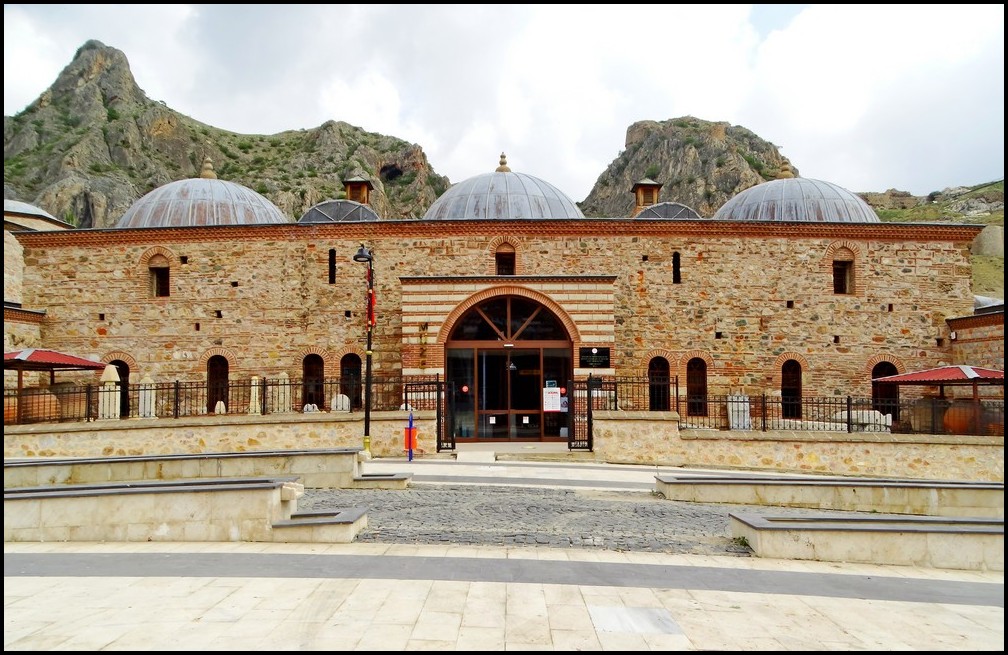
Museums
Tokat’s small but excellent specialty museums are all housed in beautifully-renovated Ottoman buildings, except for Belediyesi Sehir Museum, which is housed inside a modern building. And as noted above, all the museums are free!
The most significant museums are Tokat Museum, Tokat Belediyesi Sehir Museum and the unique Latifoglu Mansion.
Tokat Museum (archaeology)
This excellent medium-size museum is housed in a stunning historic market building set at the base of the jagged mountain topped by castle ruins. The professionally-renovated brick multi-domed market building is just as worth seeing as the museum displays.
The professional displays cover the entire history of the Tokat region, from the Copper Age of 4000 BC on through to the Ottoman Turkish Empire that ended in late 1800s. There are artifacts from a multitude of archaeological digs and explanations in both Turkish and English.
At this museum you’ll learn not only about Tokat, but about the Greek, Roman, Seljuk and Ottoman Empires in the region.
Tokat Belediyesi Şehir Müzesi (city history & culture museum)
This city history & cultural museum is situated directly in front of Tokat Museum, across a cobblestone road lined by flowing water canals and a splendid life-size copper camel caravan procession.
The museum displays Tokat’s historic industries like coppermaking, textile printing, rope making, as well as clothing and daily-life objects.
Tokat Culture Evi Museum (culture museum in historic Ottoman mansion)
This small museum is housed in a beautiful Ottoman house, situated just a few blocks from Tokat Museum. It shows several rooms full of traditional Ottoman-era house: kitchen, bedrooms, livingroom, etc.
Latifoglu Konagi Museum (beautiful distinctive Ottoman mansion)
Besides Tokat Museum, this beautiful Ottoman mansion is probably the best thing to see in Tokat. While all Ottoman houses have more or less the same style, this particular mansion features some unique architecture and detailing that I haven’t seen anywhere else. They include dome-shaped windows, ornately-cut window coverings, a stunning & unique ceiling in the main room and other features.
There are also some explanations in English about Turkish hamams and the house interiors. Just outside, along one side of the mansion, there’s a sunken outdoor cafe with traditional-style seating booths and beautiful fabrics, all under shady trees and a garden-like setting.
Democracy Museum
This small museum is set above a cafe in a historic Ottoman building and located on the north side of Tokat’s famous clock tower. If you enter the cafe and let them know you want to see the museum, they’ll get someone to unlock the door and take you upstairs.
Several rooms have displays & explanations about Turkey’s founder, Mustafa Kemal Ataturk, and the democratic movement he founded in Turkey. There are many photos of the key democratic leaders, but all explanations are in Turkish.
Ataturk House Museum
Many cities & towns in Turkey have an Ataturk Museum. Either Ataturk lived in the house for a brief time, or the house was gifted to him by the city, or he at least visited the city.
Tokat is no exception. In this case, Ataturk visited Tokat but did not live there. This nicely-renovated Ottoman house has displays of Ataturk’s personal possessions, photos of his visits to Tokat, and explanations of his life. Worth a quick visit.
Plevne Museum
Just next door to Ataturk Museum is this equally small museum dedicated to General Gazi Osman Pasa Plevne, a Tokat native. Plevne was an important general during the final decades of the Ottoman rule in the late 1880s.
Not surprisingly, then, the museum is full of battle scenes & explanations (in Turkish only), military gear and Plevne’s life and points of fame.
Mevlana Museum
This museum is dedicated to Rumi (also known as Mevlana) and the whirling dervishes. It’s set in a historic building within a large property just east of the clock tower.
It was under renovation when I visited Tokat, so I can’t comment on what is usually on display.
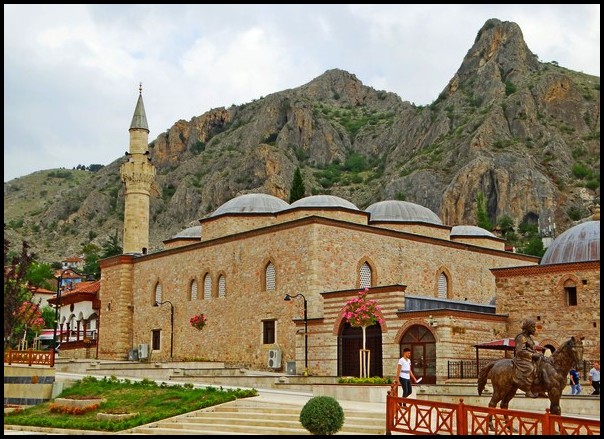
Mosques and Madressas (monasteries)
Tokat has a couple dozen historic mosques of different sizes, architectural styles, eras and degrees of renovation. There are also several madressas. If you’re really into visiting mosques & seeing their usually highly-decorated interiors, each Tokat mosque is quite different and worth visiting. If you’re less fanatical about mosque architecture then the best three to see are Maydan, Ulu and Ali Pasha mosques.
Before you enter a mosque, be sure to cover your arms & legs fully. Women should also cover their hair. Take your shoes off outside!
Meydan Camii
This large attractive stone mosque is situated right on the town’s main plaza (meydan), directly across from the Tashan. It has an unusual acrhitectural style with two buttressed exterior walls and a lovely pine-shaded mini-forest around it.
The large gazebo-style washing pavilion features and unusual red color and you can see the rocky mountain and castle ruins clearly from the mosque grounds.
Ulu Mosque
This mosque is located behind Tokat Museum, at the base of the mountain, where there are great views of winding castle walls running up the steep hillside. Ulu Mosque has a very striking, elaborate interior design.
Ali Pasha Mosque
This is the largest historic mosque in Tokat. It’s located south of Tashan, a 6-8 minute walk along the main road.
The regal stone mosque was built by Ottoman Ali Pasa and is set in a large plot of land with an open stone plaza, a beautifully-decorated washing pavilion, shady lawns and two mausoleum buildings. The impressive interior features one huge domed stone room without any column supports, which is rather unusual for mosques in this region.
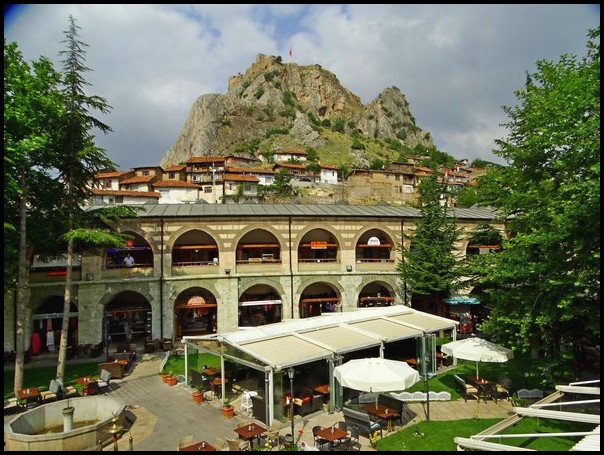
Other Major Attractions in Tokat
Tokat Tashan (Caravanseri)
Tokat Tashan is a rather famous historic ‘caravanserai’ dating to the early 1600s under Ottoman rule. Caravanserai were lodging/resting/trading places for caravan merchants on the old trading routes. They’re found all over Turkey in historic towns and cities that were located on the trade routes.
Tokat’s Tashan is famed as one of the largest and most beautiful caravanserai in Anatolia (Turkey’s vast central plateau). It also has a spectacular setting with the rugged mountain and castle ruins looming overhead. They can be clearly seen from inside Tashan’s central courtyard.
Tashan has been beautifully renovated and now has an open-air restaurant/cafe in the vast open central courtyard. That’s surrounded by small shops selling traditional Tokat specialty items like copperwares & fabrics
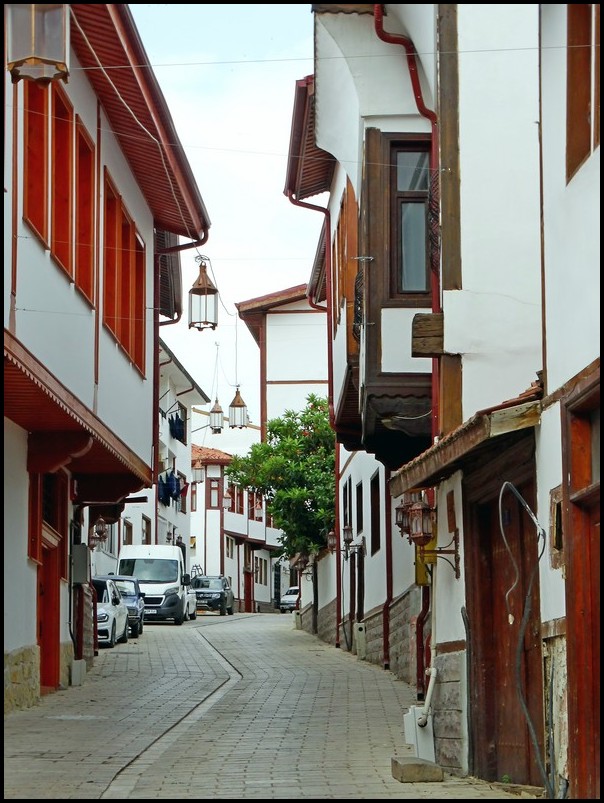
Ottoman-era old town districts
Tokat has a surprsingly beautiful and gorgeously-renovated old town. The main street runs uphill from Ulu Hamam (behind Tashan) several blocks to Ulu Mosque, close to Tokat Museum.
The cobblestone road is lined on both sides by stunning white and dark wood Ottoman houses. Many have shops and there’s also the large historic Yazmacilar Hani Hotel. Step inside its huge innner open courtyard to admire the architecture.
A second, not completely renovated, old town district is located on the east side of the clock tower and runs for several blocks.
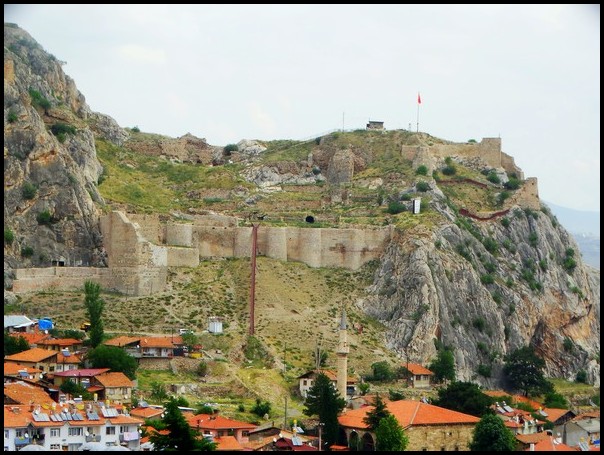
Tokat Castle ruins
Nobody can miss seeing Tokat Castle ruins, set on top of the highest rocky peak that soars over the Tashan and main plaza of Tokat’s historic area.
Although it looks very high and very far, it’s just a 15-20 minute stiff hike up on steep roads through an old residential district set on the hillside. The road run up from behind Tashan. It’s not marked, but just stop any local pasing by, point uphill and ask, “Kale?” They’ll direct you up the correct road.
You have to make a few turns to reach the base of the castle walls, but just keep going uphill towards the castle and you’ll get there.
The entrance consists of an large open doorway in the rock face. Enter and climb up a series of metal stairs to reach the very top, where a guard stands duty in a small hut.
Enjoy the fantastic panoramic views over Tokat and surrounding mountains.
Saat Kulesi – aka Clock Tower
Tokat’s much-acclaimed historic stone clock tower has four large clock faces, one on each side, so that it can be seen from every point in the city and stands tall at 33 M / 100+ ft. It was built in 1902 to commemorate the 25th anniversary of Abdulhamid Pasa’s reign.
Yisilirmak Riverside Walk
I’ve described this riverside park area with its wide pedestrian walkways. It makes a great one-hour scenic walk. Those who prefer quiet, uncrowded walks should head out in early mornings. Those who prefer a lively, crowd-strewn setting can find that in afternoons and evenings.
Historic Stone Bride ‘Hidirlik Koprusu’
The multi-arched stone bridge crosses the Yisilirmak River where Tokat’s main north-south road reaches the river (that’s the main road through Tokat’s historic district). It was built by the Seljuk Turks (1100s-1200s) and has been beautifully restored.
Historic Hamams
Tokat has several historic Turkish bath houses. Most have been restored. Some are used as museums, while others are still operating as bathhouses to this day.
Pervane Hamam dates back 750 years to the Seljuk era and is located right behind Tashan. Ali Pasa Hamam is directly across from Ali Pasa Mosque and is still an operational bath house.
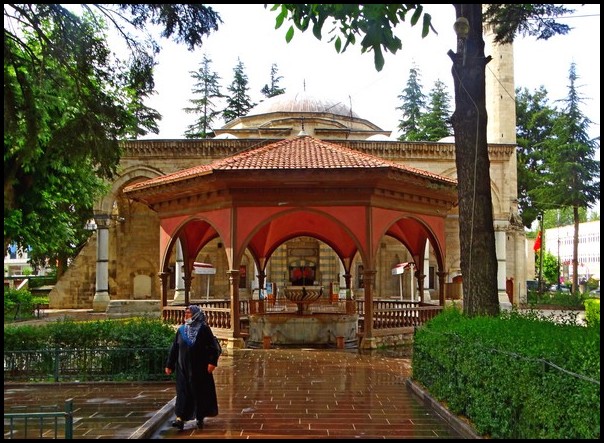
Summary
So that’s my introduction to Tokat. As I mentioned, the little-known historic town (now large city) is definitely worth a few days’ visit, particularly for travelers interested in history, architecture and traditional Turkish cultures.
I really enjoyed my stay in Tokat and even extended it from four to five days in order to see everything in depth.
Meanwhile, note: If you had your Turkey eVisa denied, check out Natvisa on what to do next.
================
You might also like:
Guide to Hiking in Cappadocia Canyons
================================

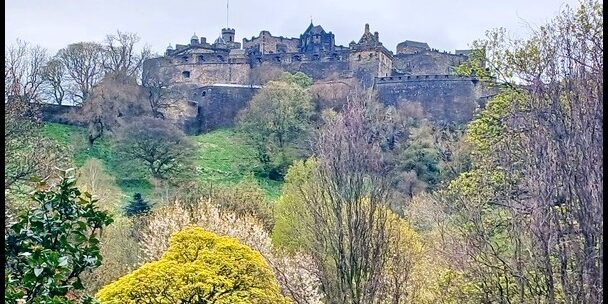
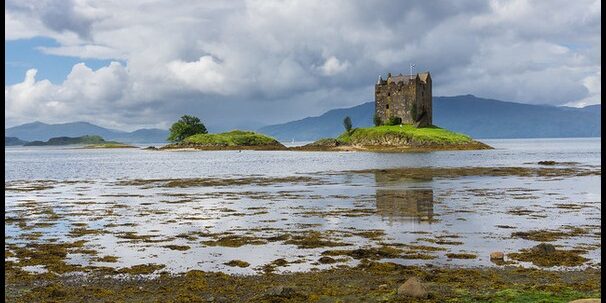
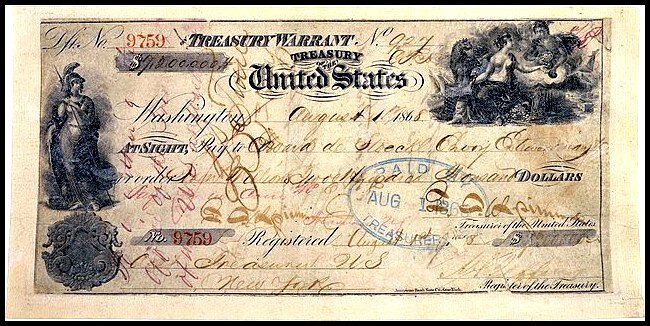



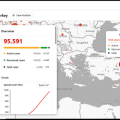
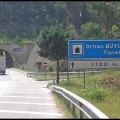

 Hi! I'm Lash, an American nomadic world traveler who's been traveling solo since 1998. I’m passionate about traveling the world nomadically and then sharing it all with you. I hope to inspire you to travel the world, to entertain you with tales from the road, and to help you reach your travel dreams. Welcome!
Hi! I'm Lash, an American nomadic world traveler who's been traveling solo since 1998. I’m passionate about traveling the world nomadically and then sharing it all with you. I hope to inspire you to travel the world, to entertain you with tales from the road, and to help you reach your travel dreams. Welcome! 



